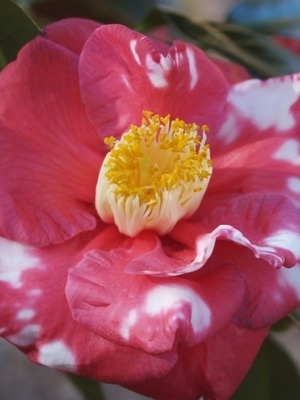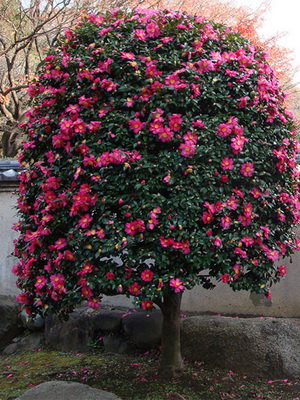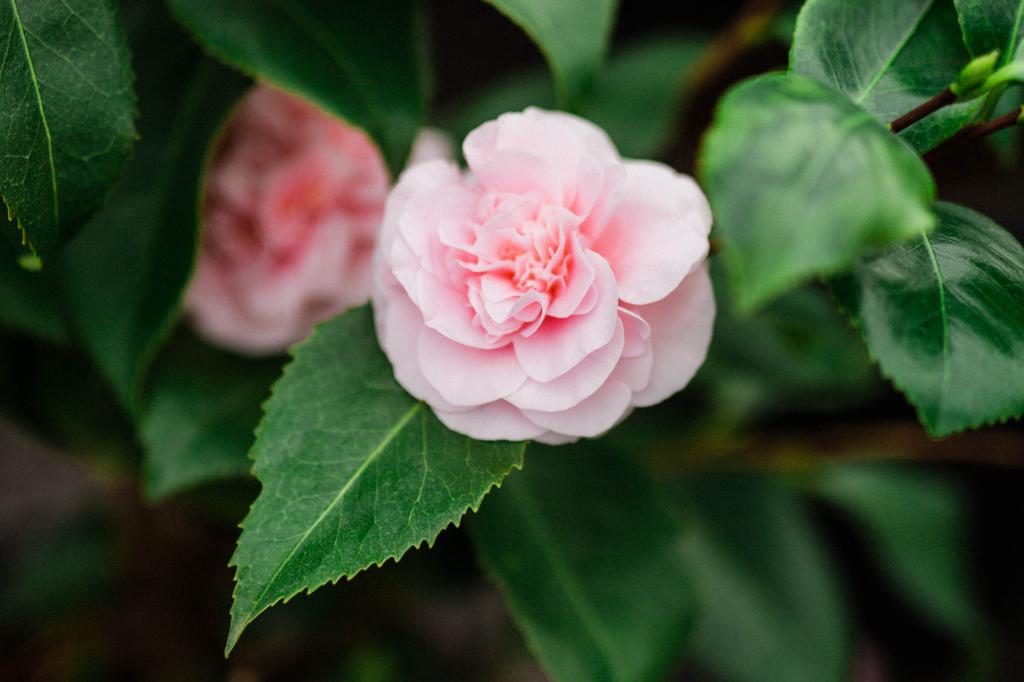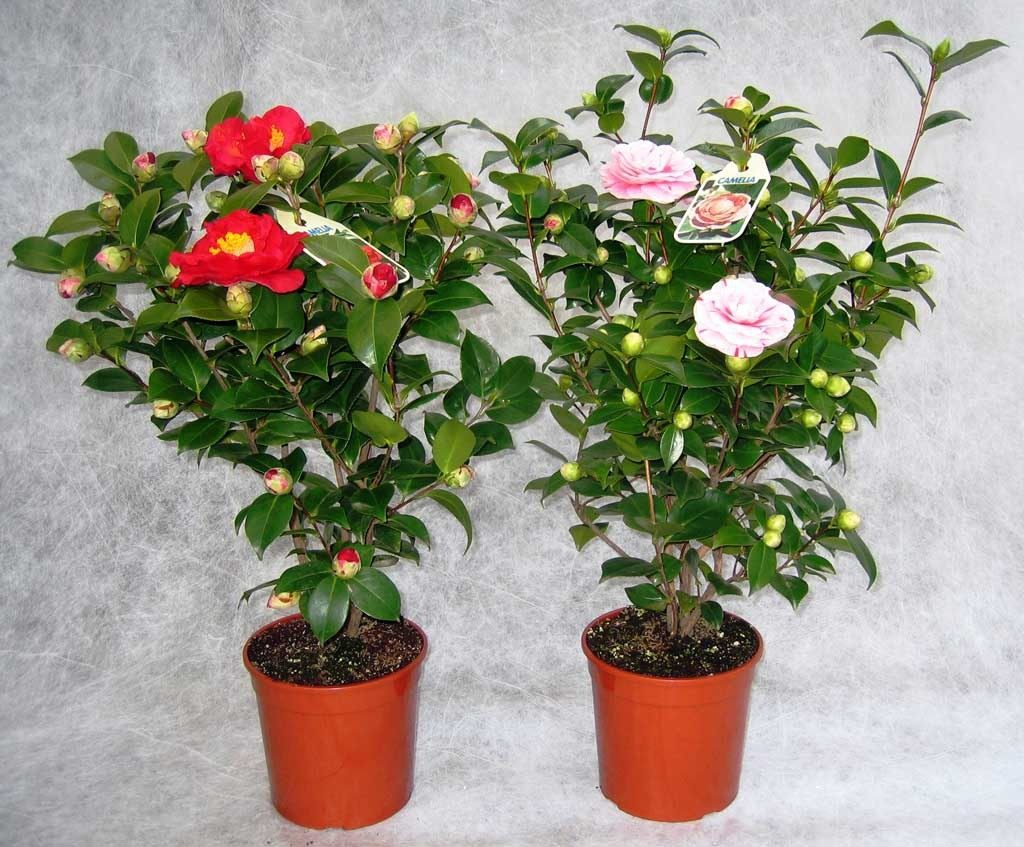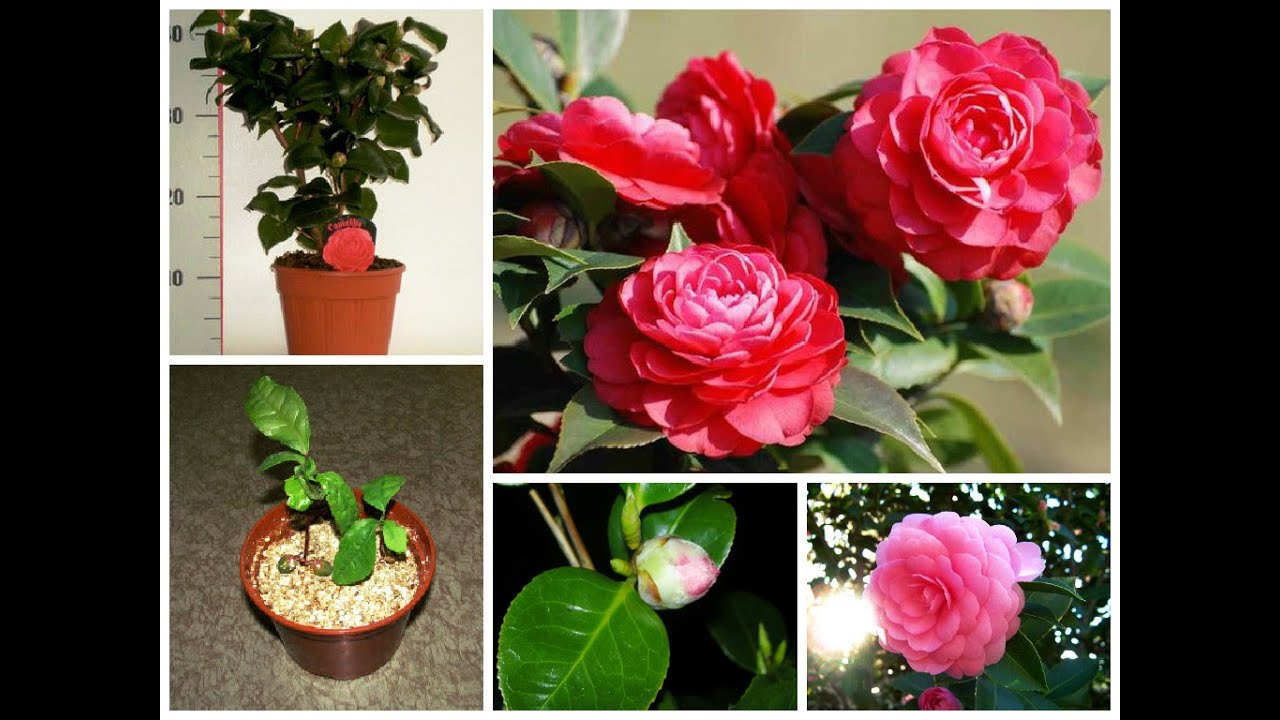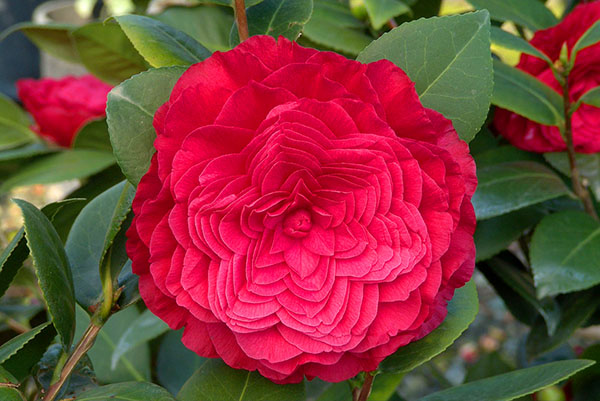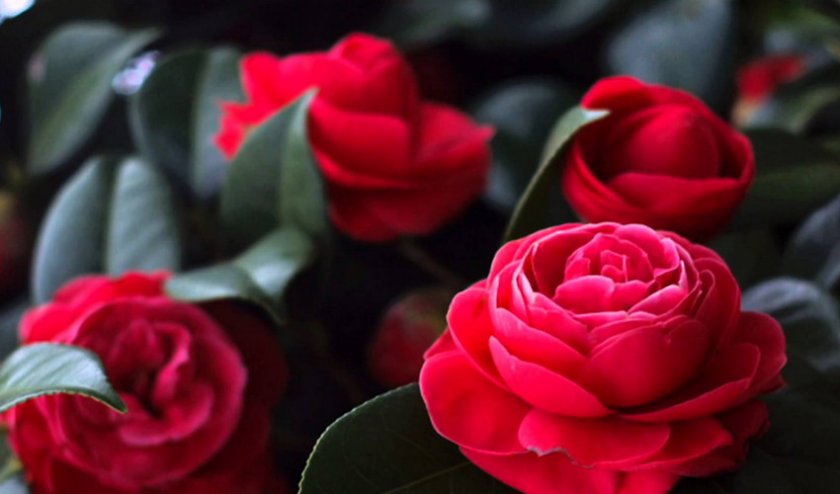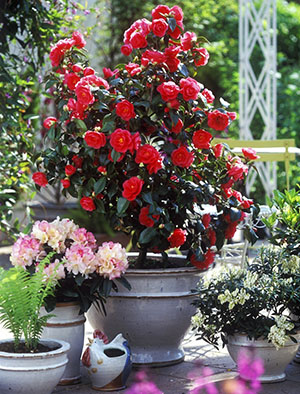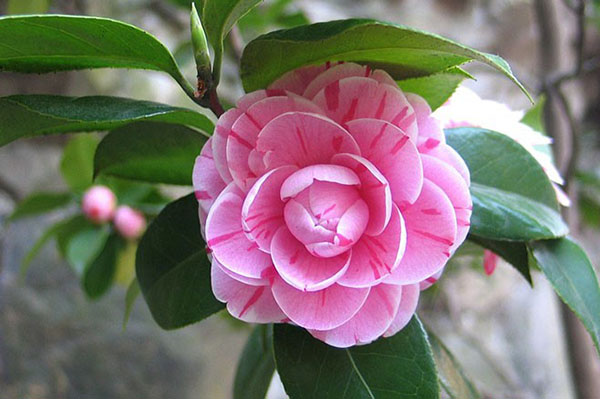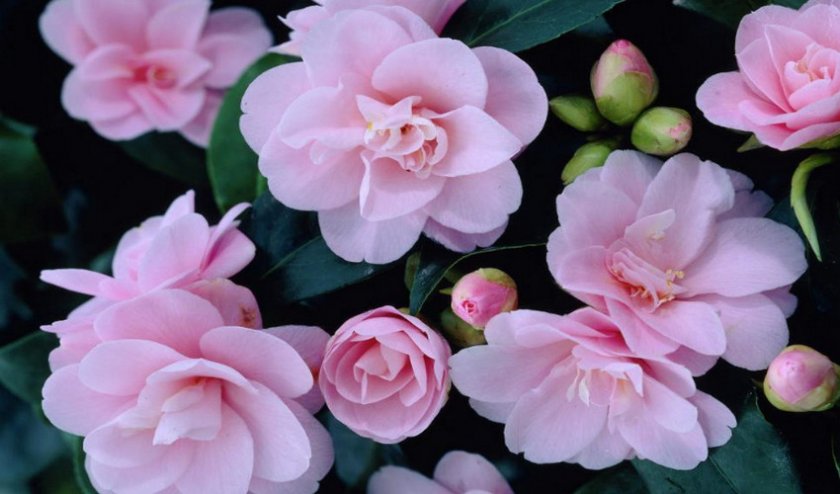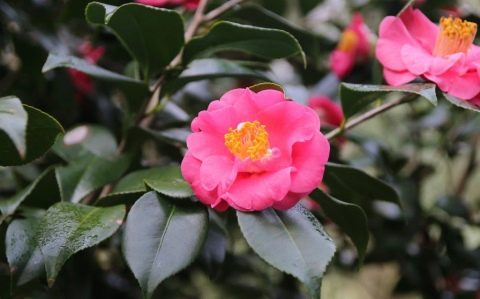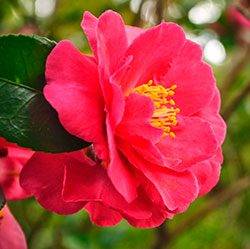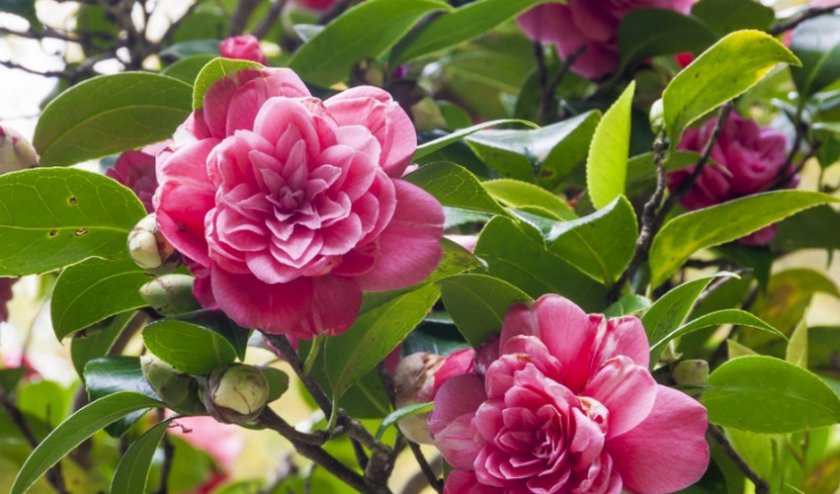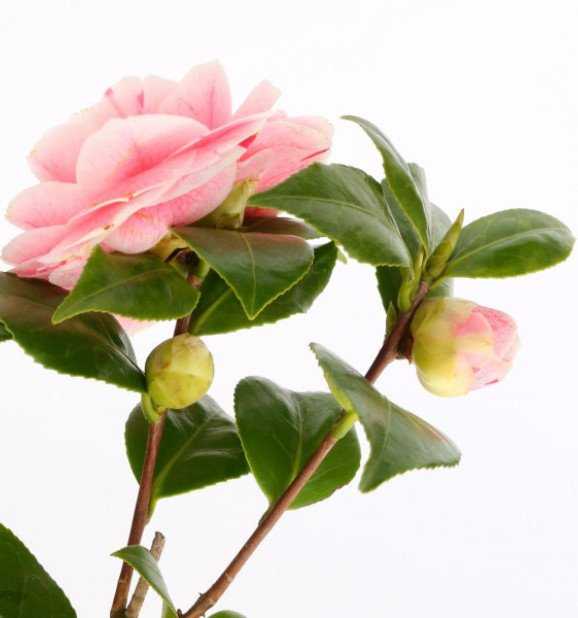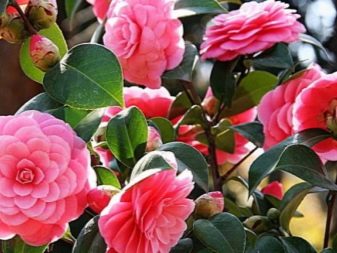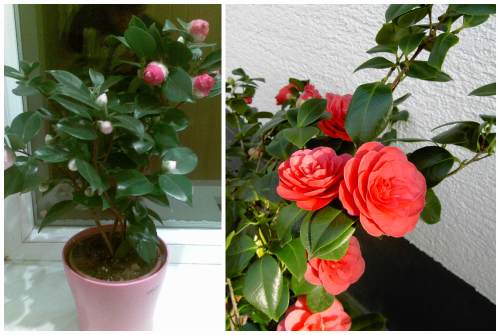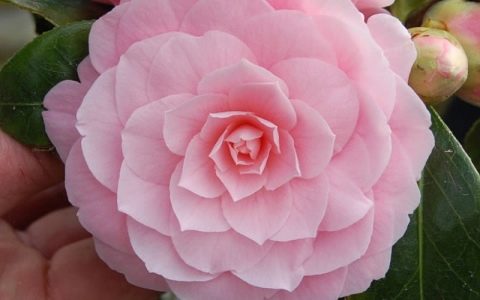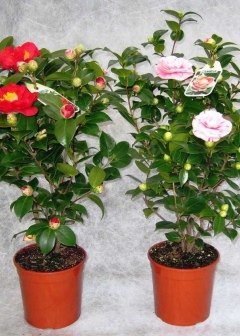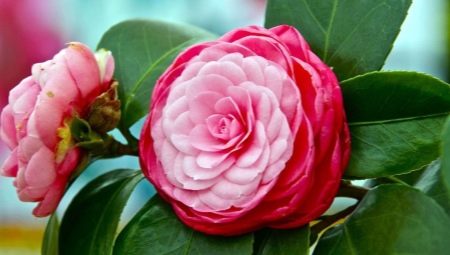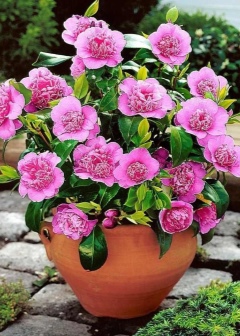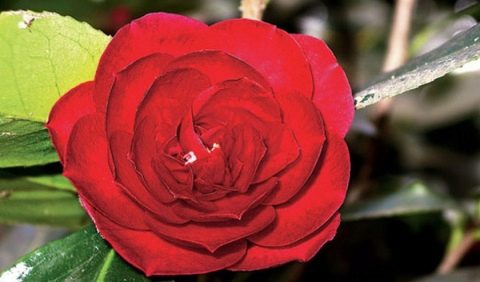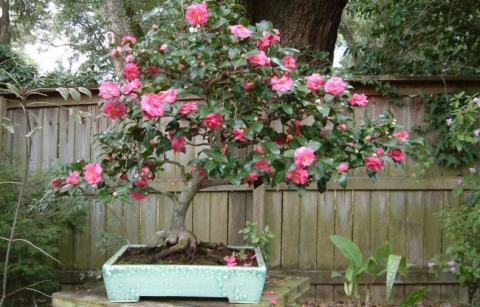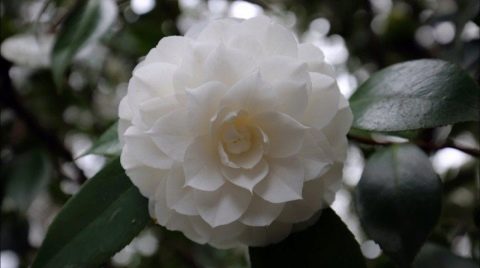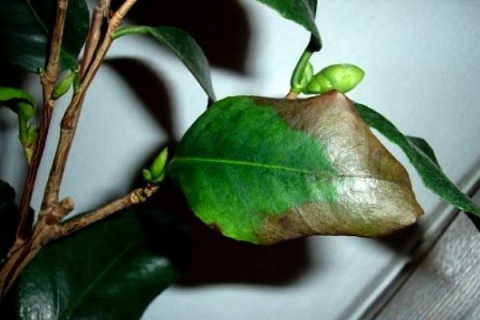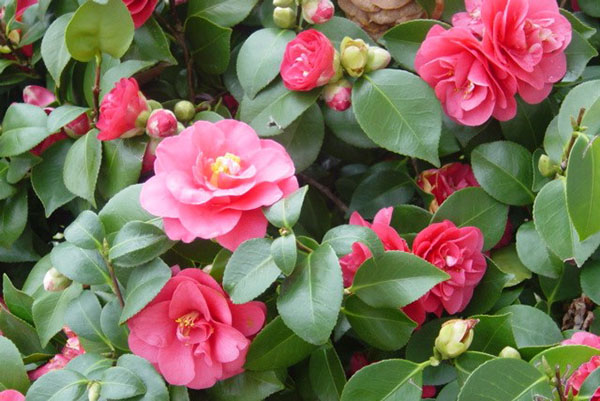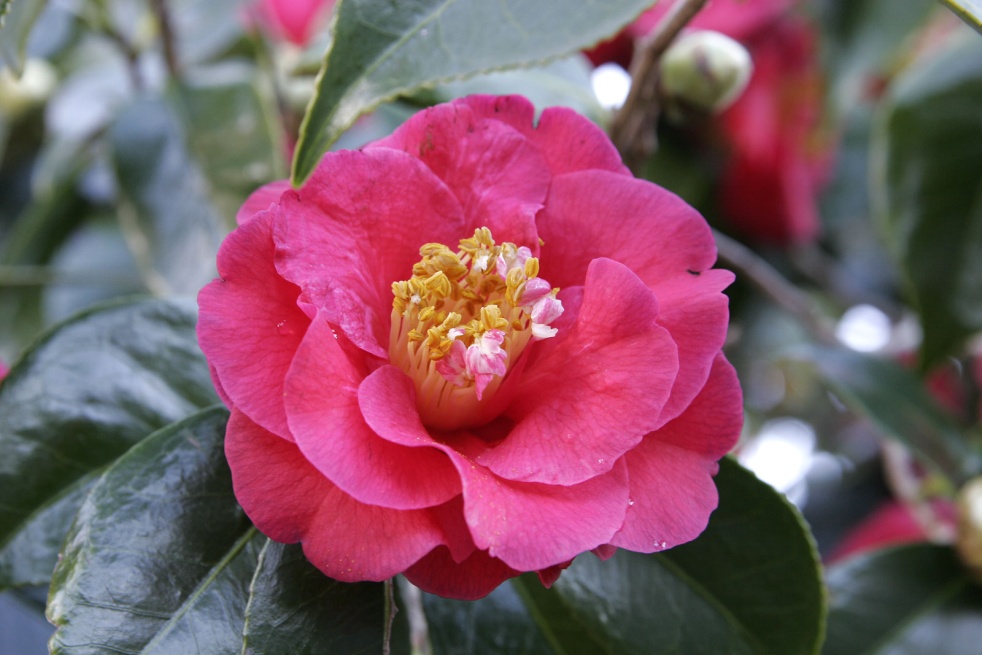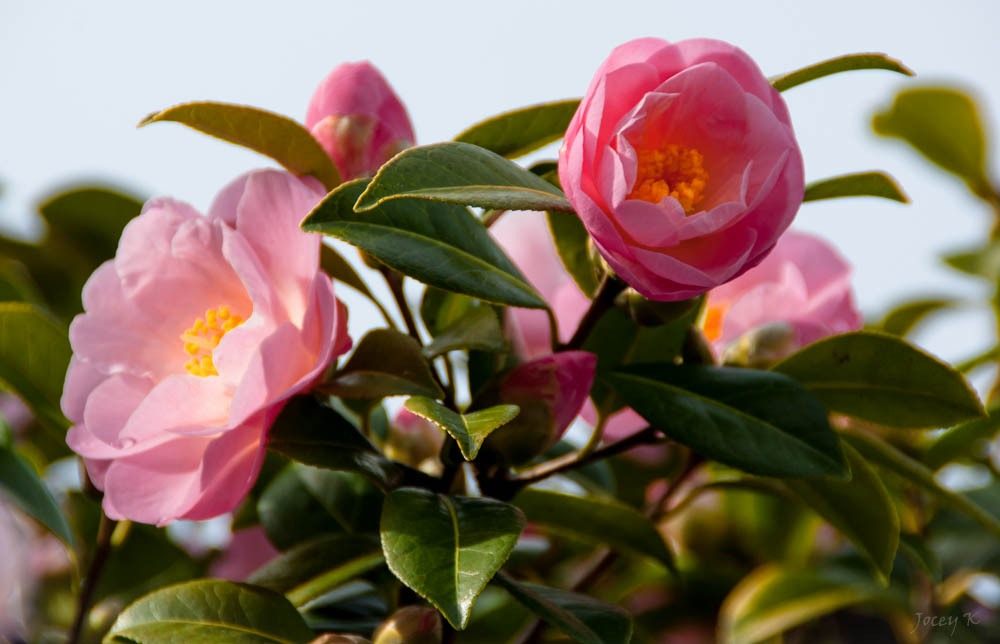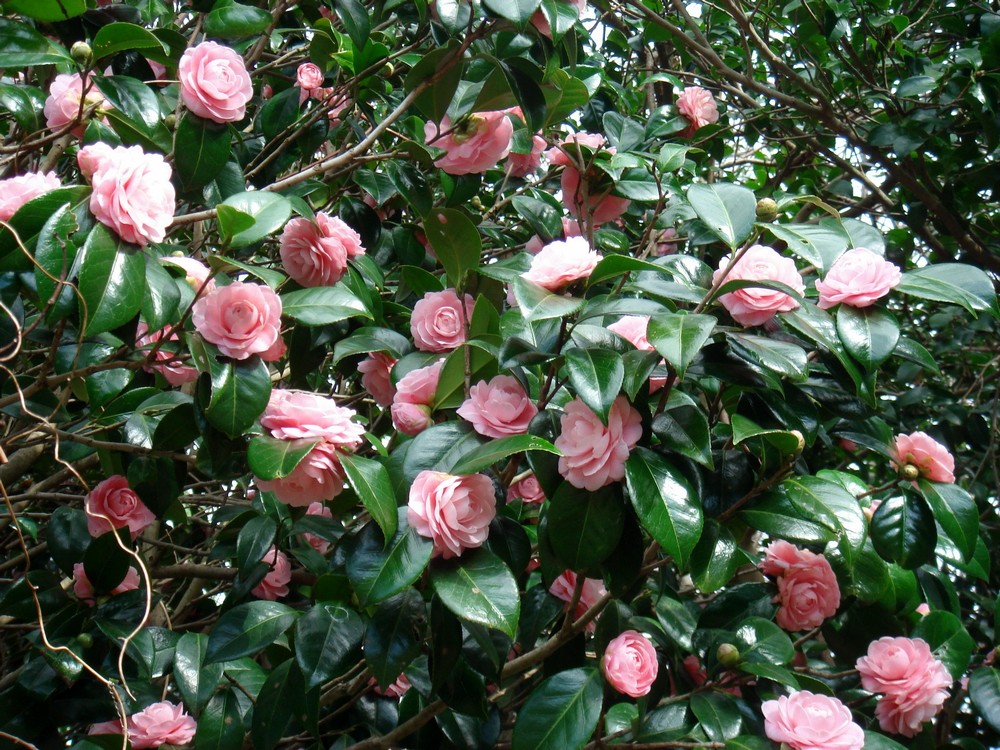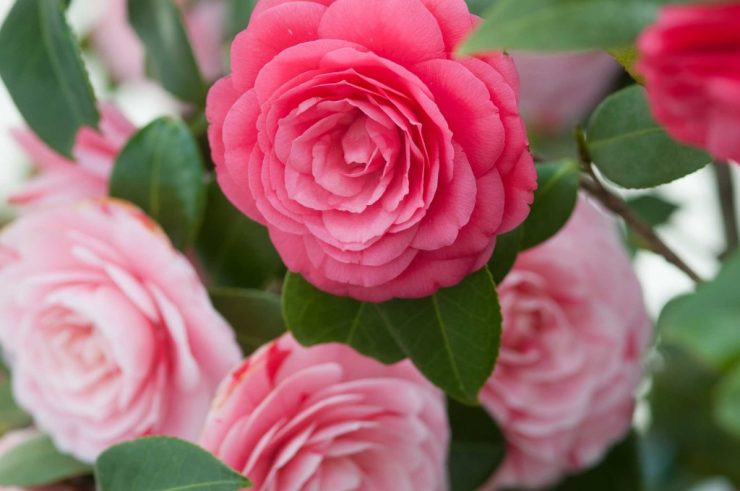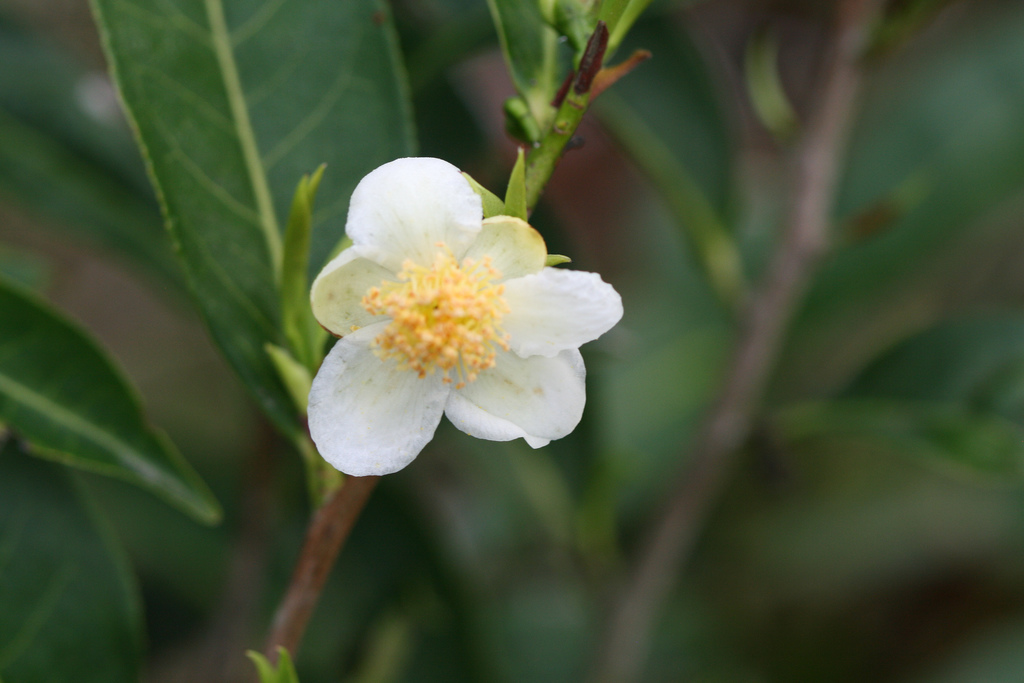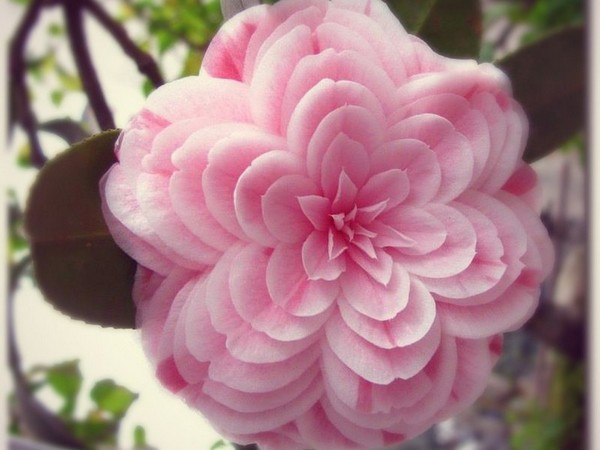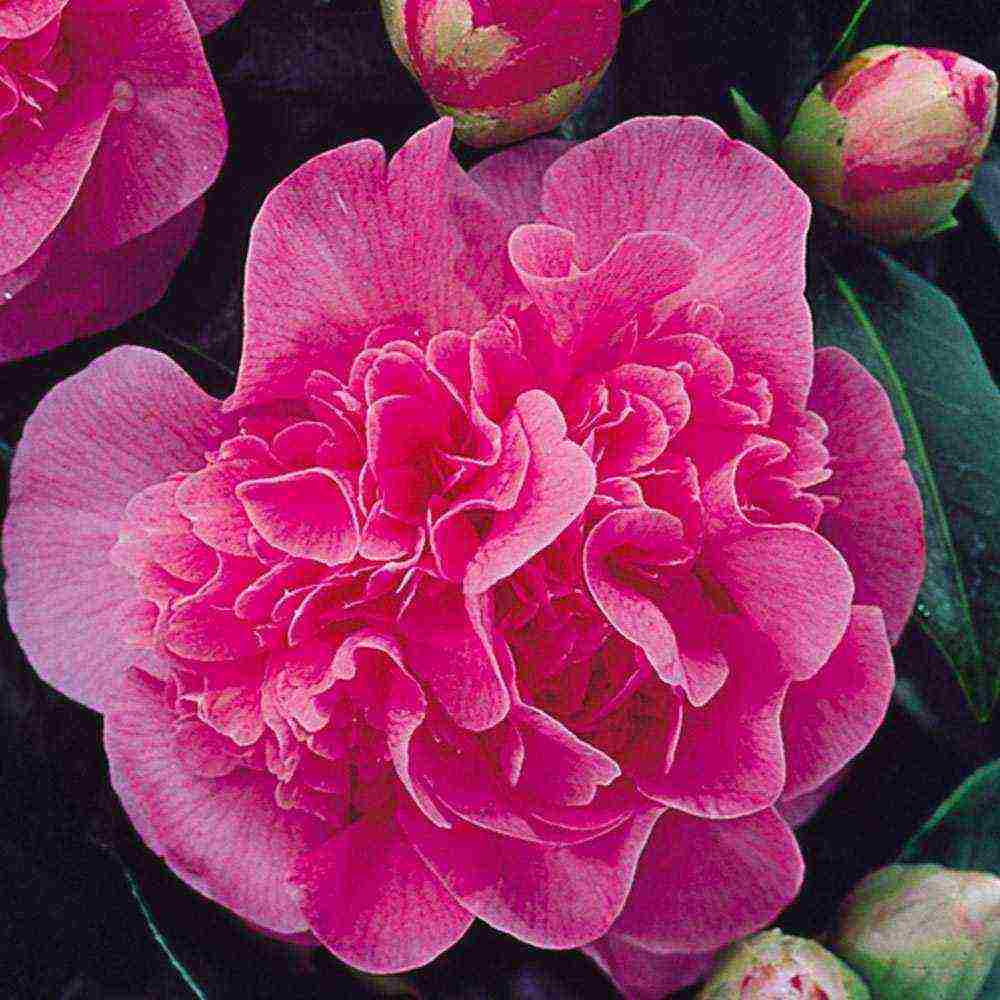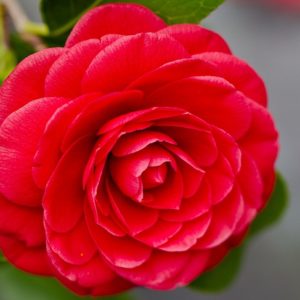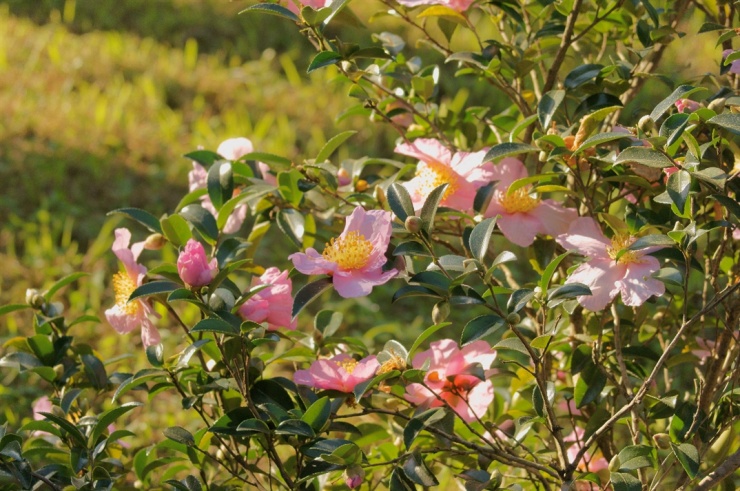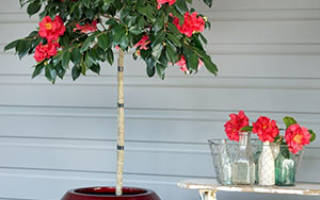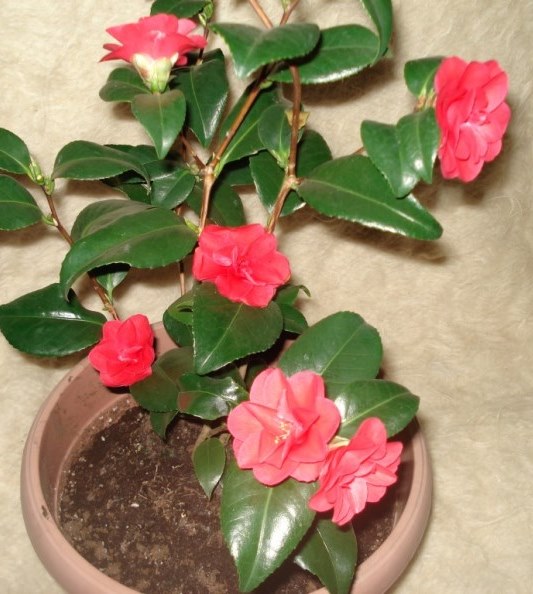Japanese camellia care
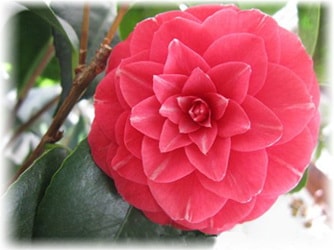
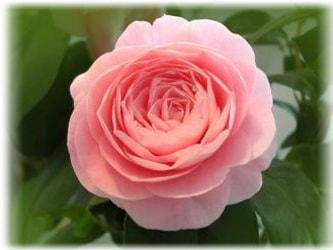
Lighting:
Japanese camellia loves spacious rooms with diffused lighting, which is why balconies and loggias are good options. But bright sunlight should not directly hit the plant. Young flowers prefer more shaded light, and adults prefer brighter ones.
Temperature:
In order for flower buds to germinate, a temperature of no higher than 20 degrees is required. During the flowering of Japanese camellia, the temperature must be kept at a level not higher than 12 degrees.
Since the flowering period is from December to May, it is not difficult to adhere to this, especially if the camellia is on the balcony or loggia.
Watering:
The soil in which the Japanese camellia grows should not be allowed to dry out, but at the same time, not too flooded with water.
Humidity:
Humid air likes this kind.
The soil:
This plant prefers moist, acidic soil.
It is good for the composition to use peat (one part), humus (one part), sand (one part) and leafy earth (two parts). You can also add a little earth from a coniferous forest to the mixture.
Do not forget to add drainage to the soil so that the water does not stagnate in the pot, otherwise the plant may die.
You need the room in which it grows, it is necessary to spray well or use a humidifier. It is necessary to spray the plant itself every day. To do this, use soft, settled water, and direct spraying from top to bottom. It is not recommended to spray the camellia flowers themselves abundantly.
It is also very useful to install a tray with wet pebbles at the bottom of the pot for additional humidification. But make sure that the bottom of the flower pot does not touch the water in the pebbles.
Water as needed so that the soil is always slightly moist.
In summer, watering should be a little more abundant. It is very good to use rainwater. Plain water must be defended before watering.
A sign of insufficient moisture: leaves are crumbling, and if there is too much moisture, the leaves will turn brown and the buds will crumble.
Top dressing:
Organic fertilizers are very useful. In the period from spring to autumn, twice a month, the plant must be fed with liquid fertilizer that does not contain lime.
Fertilizers that are used for orchids are also suitable for feeding.
Transplant and reproduction:
Only young plants can be transplanted every year. Adults are recommended to transplant once every 2-3 years. This must be done from November to February.
When transplanting, make sure that the root collar of the Japanese camellia is not covered.
You can reproduce in January and July. To do this, you need to cut off the semi-lignified stalk and place it in a mixture of sand and peat. Then use the rooters and cover the pot with plastic, forming a kind of greenhouse.
The petiole takes root after 3-4 months.
The next year after rooting, the camellia must be transplanted into a larger pot. After transplanting, it is necessary to pinch the top of the plant in order for the plant to grow.
The first flower buds begin to form from the fourth year. It can also be propagated by seed, but only fresh seeds must be used.
The seeds must be placed in a mixture of sand and peat, covered with polyethylene and grown, maintaining the mark on the thermometer in the region of 21-24 degrees. Then the sprouted seedlings must be dived.
Pests and diseases:
Due to excess moisture, the roots can rot and die.Also, Japanese camellia can often be subject to fungal diseases.
A sign of this is brown and gray spots on the leaves of the plant.
Pests
: spider mites, aphids, thrips, whitefly and scale insects.
Medical use:
The plant is considered poisonous, but if used correctly, many benefits can be reaped.
In China, Japanese camellia is used in folk medicine. The drugs received are considered anti-cancer drugs.
In addition to traditional Chinese medicine, pharmacists also often use essential oils obtained from camellia flowers. These oils have a tonic, astringent, anesthetic and antiseptic effect.
How to choose a camellia?
Flowers should be bought in special stores or nurseries. Choose a healthy plant, symmetrical, with elastic leaves. Inspect the leaves for spots or cobwebs. The bush should have many buds and few flowers. Such a variety as Japanese camellia is perfect for both beginners and experienced florists, and will become a real decoration of the house.
There are also seedlings on sale. Flowers are removed from flowering seedlings. Thus, the nutrients after planting promote the development of the root system.
You can also go the hard way and grow camellias yourself from seeds. This is a long but fun way to get plants.
Transfer
To stimulate growth, pinch the tops 2-3 months before the transplant, at the end of October.
The best time for transplanting camellias is the end of autumn - the beginning of winter. The plant is placed in a tub or pot shallow, an extra layer of soil just a couple of centimeters can lead to root rot.
Transplanting in spring is also allowed, but spring transplanting can delay future bud formation and negatively affect winter blooming.
Soil mix
A quality substrate is the basis for good growth and comfort for camellias. The soil should be acidic, loose, breathable and retain moisture well. With the wrong choice of soil, there is a high risk of flower death.
To prepare the land mixture, it is necessary to mix turf soil, peat, coniferous soil and river sand in a ratio of 1: 1: 1: 0.5. You can buy a special soil mixture "Azalea", "For camellias", etc., the main thing is to keep the pH in the range of 4-5. Some growers call ready-made soil mixtures an experiment, and it is not known whether it will be successful. While for beginners, the pack earth can be a great helper. However, you should only trust well-known and trusted companies - manufacturers that produce really high-quality mixtures.
Care
At home, caring for a camellia is not easy. The plant loves sunlight, but it should be diffused. The western or eastern side of the house suits the flower. When placed in the south, it needs shading from the scorching sun rays. North windows are not suitable because the branches stretch out there and the leaves become small. To keep the crown flat and lush, the pot is periodically unrolled. Then the sun evenly illuminates the bush from all sides. After the beginning of flowering, the plant is not touched. Otherwise it will drop the buds.
Important! Camellia needs a day of light lasting from 12 to 14 hours. If it is less, they organize illumination with phytolamps.
Temperature

The correct temperature regime is necessary for camellia for normal development. In order for the bush to develop actively, conditions are created that are similar to natural ones. In winter, the plant needs a temperature of + 10 ° C to + 15 ° C for flowering. Camellia tolerates a slight drop in temperature to minus values. In an ordinary city apartment with central heating constantly operating in winter, it is impossible to maintain constant coolness. Therefore, it is better to transfer it to a glazed and insulated loggia, a balcony, or to a veranda in a private house. Then you can watch the camellia bloom in winter.In summer, the plant feels good if the air warms up to a temperature of + 20 ° C to + 25 ° C.
Watering
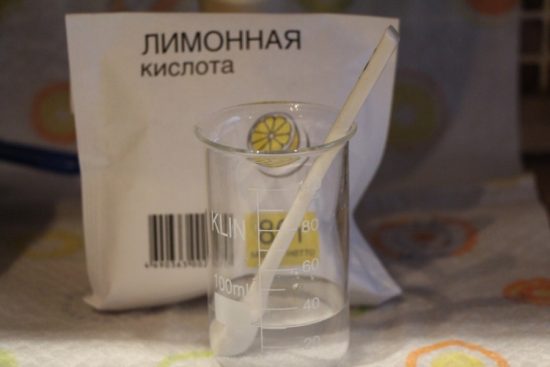
During the period of active growth, camellia is watered abundantly. Half an hour after irrigation, the liquid accumulated in the pan is drained so that the soil in the pot does not become waterlogged. For humidification, use only soft water, for example, bottled, boiled or passed through a filter. A little citric acid is added to soften the tap liquid.
During the winter rest, the frequency and volume of irrigation are reduced, but not allowing the soil in the pot to dry out. During this period, the need for watering is determined by the state of young leaves. If they have slightly lost their elasticity, the bush is watered. To stimulate flowering, a small drought is arranged for the plant a month before the desired date for the appearance of buds.
Air humidity
Camellia needs constant air humidification. High humidity is especially important if the plant remains in a city apartment for the winter. A running central heating dries up the air. Being in such conditions causes buds and leaves to fall off. Regular spraying of the foliage with warm water from a spray bottle without moistening the soil will help to avoid negative consequences. To increase the humidity, the pot is placed on a pallet with wet stones or moss. If there is such an opportunity, a household air humidifier is installed next to the flower, which improves the microclimate in the room.
Top dressing
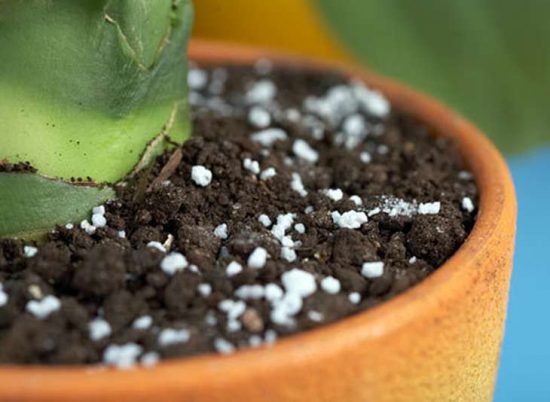
Additional portions of nutrients for camellia are applied from March to August 1 time per month. Mineral complexes or organic matter, excluding manure, are used as top dressing. Fertilizers in liquid form for orchids and azaleas are especially effective. The dosage indicated on the package for the drug is reduced by 2 times. The lack of nutrients for camellia is less harmful than their excess.
Important! The plant is not fed with complexes with a high content of magnesium and calcium. The indoor flower gets these chemicals from water during watering.
Their excessive content causes alkalization of the soil and harms the growth and development of culture.
Pruning
The bush is periodically trimmed so that its crown is formed correctly. For sanitary purposes, during the procedure, all the defects of the plant are eliminated. Cut off dried or diseased areas of shoots, branches directed inside the crown and violating its structure. Sanitary pruning is carried out as needed at any time of the year.
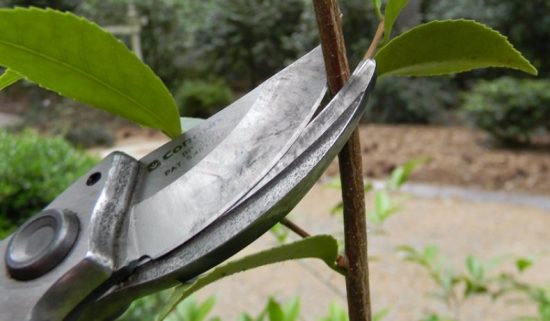
A haircut for crown formation is performed immediately after flowering is completed, until the laying of new buds has begun. All branches are shortened by half or a third of the length. Open wounds are disinfected by dusting with crushed activated carbon.
To stimulate branching during transplantation, pinch the upper part of the shoot. Pinching is not done for all branches, but only for a part. Then the crown takes the desired shape. Camellia sometimes pinch buds. The procedure is carried out to translate quantity into quality. It is difficult for a plant to ensure the full development of all flowers. Therefore, with a decrease in their number, the flowers turn out to be larger, they remain longer on the branches.
Reproduction of camellia
Most often, camellia is propagated by cuttings. To do this, with the arrival of summer heat, cut off young shoots that have formed on the tops of the branches. It is advised to choose cuttings with olive bark, but you can also take very young ones with a green stem surface. Reproduction is carried out step by step:
- A suitable container is prepared, which is filled with a mixture of peat and sand or perlite.
- Freshly cut cuttings are placed in pots.
- The containers are covered with foil to create greenhouse conditions.
- The planted plants are regularly sprayed and aired.
- Vases with cuttings are placed in a room with diffused lighting and a temperature of + 20-25 ˚С.
- Rooting occurs after 1.5-2 months. After this period, the film is removed, and the flowers are planted in permanent flowerpots.

Reproduction of camellia
It is quite difficult to propagate a plant by seeds, but it is possible. Camellias are propagated by seed by experienced breeders. For florists, it is easier to use cuttings or the grafting method, which is ideal for varieties with a weak rooting process. The flower is propagated by grafting in the middle of winter.
What it is?
It is curious that camellia is almost certainly present in your home, even if you do not suspect about it: the fact is that an ordinary tea bush is also a kind of this flower. Of course, camellia is not one species, and far from ordinary tea is grown as a houseplant, but in general it is also just a camellia. The name of the plant was given by Karl Linnaeus himself - the author of the world's first systematic classification of biological species of animals and plants.
Camellia was named after the Czech missionary and scientist Georg Joseph Kamel, who is believed to have brought the first ornamental shrub species from the Philippines to Europe. Then, of course, the current variety of varieties and colors was not yet there, but already at that time the most delicate buds conquered hearts.
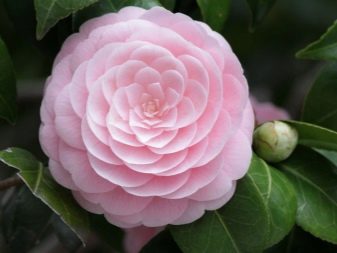
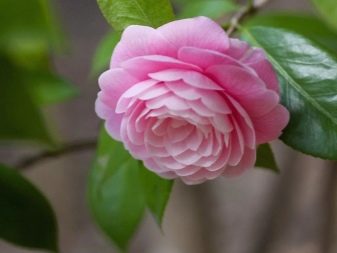
It is worth noting that camellia only in Europe is associated with beautiful ladies, and in other countries at different times it could have completely different meanings. For example, in the same Japan, Christians at first were forbidden to wear a cross for a long time, and they chose the red camellia as their symbol, although before that it symbolized the local sun goddess Amaterasu.
For most of Japanese society, this flower was a symbol of longevity, but in the last century it was often associated with cemeteries. In the USA, the flowers of the same plant, only white, were chosen as their symbol by representatives of the Ku Klux Klan - one of the first and most famous racist organizations in the world.
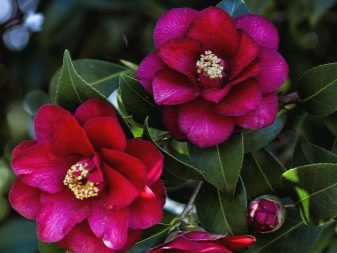
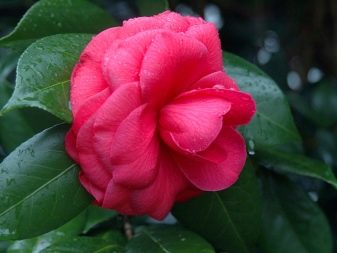
If we consider all known types of camellia, then usually these are bushes or trees, whose height ranges from 2 to 20 meters, although shrub forms are more often chosen for home cultivation. The leaf is somewhat elongated, resembles an egg in shape, has a characteristic leathery structure.
The description of the flower in general terms has already been given above, but it should be said that, depending on the variety, the size can vary greatly - from 1 to 12 cm in diameter. In the wild, such a flower usually looks like white, pink or red petals accreted at the base, but modern breeders have already managed to thoroughly work on a variety of options.
Paradoxically, a beautiful flower has no smell at all - neither in the wild, nor in the cultured one. If we consider all varieties together, then the total flowering duration is impressive - from April to December, but at the same time each flower usually lives no longer than a month, and in general one tree can bloom no more than four months a year, and even then - only if the variety is like that ...
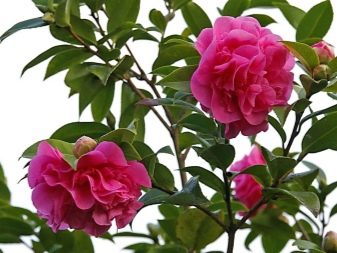

Not all wild camellia species are cultivated in modern gardens, but some have gained remarkable popularity. If the climate does not allow growing a shrub outdoors, it grows normally indoors. For absolutely normal year-round growth of this evergreen in outdoor conditions, a subtropical climate is required, therefore, in the territory of Russia, camellias in the wild-growing form are found only in the vicinity of Sochi.

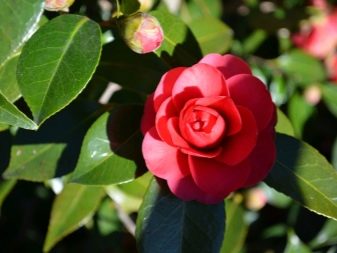
Place for a flower
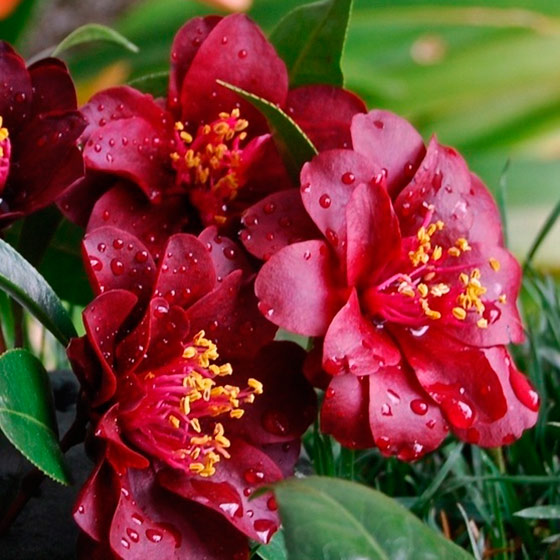
First of all, keep in mind that this is a very large plant, it does not belong in a small room. In addition, without sufficient knowledge of care, it will not work to grow a blooming beauty. The plant is extremely demanding on the conditions of detention, if the rules are violated, it dies.
If you decide to try to grow camellia in your home, then you will have to try a lot to see stunningly beautiful flowers on it.
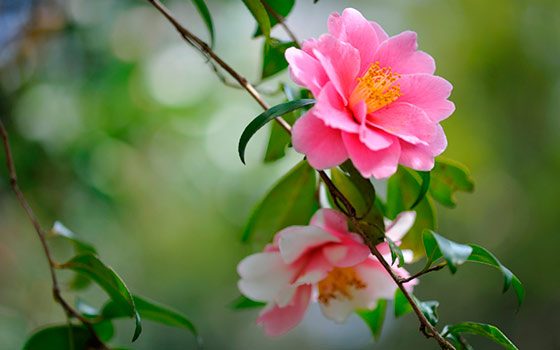
This plant needs long and bright light. Daylight hours for her should last at least 12-14 hours, that is, in winter, be sure to illuminate the flower with a lamp.With a lack of light, the buds begin to crumble, and new ones will not appear until you provide adequate lighting.
Whatever the difficulties, I am sure that they will hardly become an obstacle for an enthusiastic grower. In the desire to plant our favorite flowers, we become almost magicians!
Growing camellia: how to plant seeds correctly to grow a beautiful bush
To grow a beautiful camellia bush with the help of seeds, you need to carefully select the type of plant as possible, since such reproduction will ensure the successful production of decorative specimens of far from all varieties.
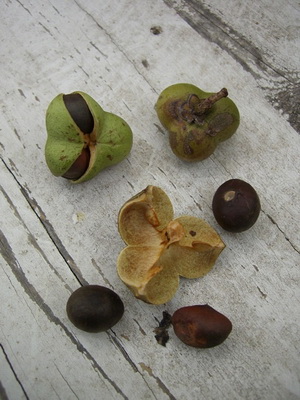
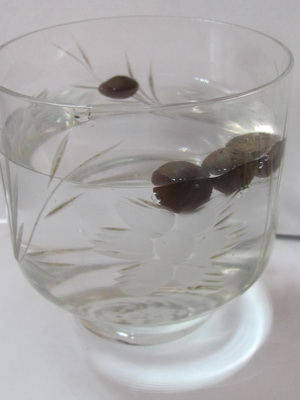
Planting camellia seeds is necessary as soon as they are fully ripe and suitable for sowing. To do this, you need to place them in disposable cups with loose garden soil and cover with glass or plastic. Place the containers in a well-lit place with a temperature of 20 - 23 ° C. The substrate is constantly sprayed with settled water. It will be correct to plant the camellia in a new pot after 2 full leaves have appeared on the plant.
At home, growing camellia using seeds is not recommended, since this method is usually used exclusively for breeding purposes.


